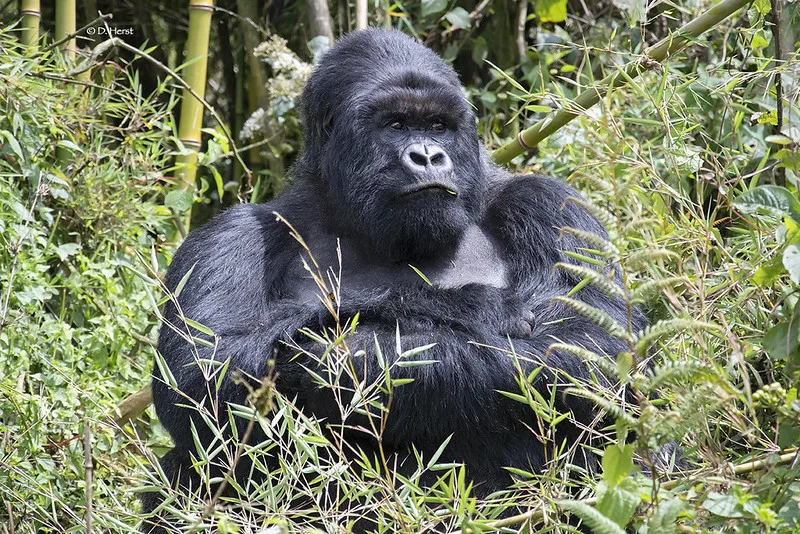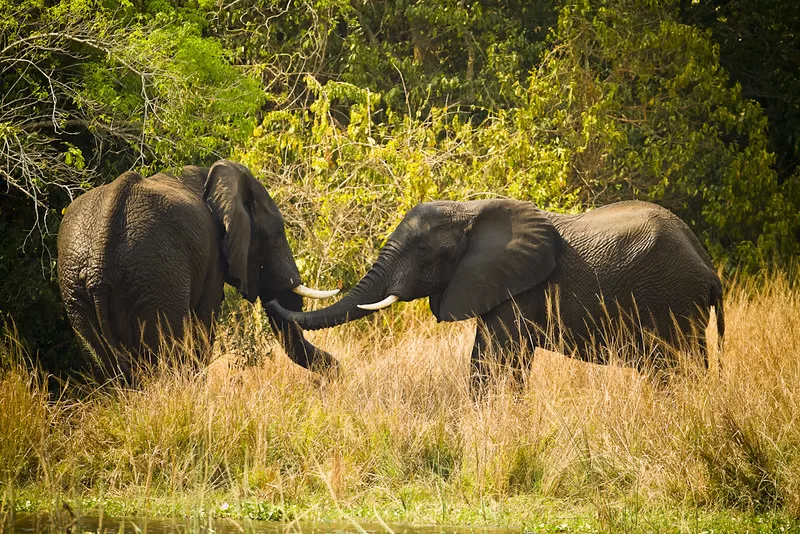Bamboo shoots were the gorilla’s most concentrated form.
The gorilla found highest concentrated type of protein in bamboo stalks. They accounted for more than 14 percent of group five yearly diets and included plenty of fluids as well. Schaller had also seen the value of bamboo. Still, there were gorilla families practically never eating bamboo between his research location on Mount Mikeno in Congo and group 5 s habitats on the border of Rwanda.
One of them was group 4, the ill-fated clan of Uncle Bert and Digit, the long term study group of Dian and now David occupied the highest altitudes in the Visoke saddle, which seldom dipped low enough on either side to discover bamboo stands. Maybe it was a cultural issue and they really disliked bamboo, or maybe they liked their concentrated nettles.
Perhaps they disliked the rivalry from other gorillas. The issue of whether group 4 may have had greater access to bamboo if huge lower elevation stands had not been turned into agricultural fields remains permanently unknown.
The gorilla’s curiosity in ants was one surprising find. Amy has previously seen that the gorillas will actively fight over Vernonia galls loaded with bug larvae. Claims of vegetarian purity suffered far more when she gathered proof of their ant-loving inclination. She first witnessed gorillas grooming themselves by inserting driving ants into their months.
But Amy reasoned that this would be the simplest approach to eradicate a hard-biting insect that had somehow found its way onto their bodies. Then she found full driver ant bivouac torn apart by the gorillas, and their poo revealed enormous volumes of undigested ant body parts. Though it suggested a more complicated diet than had traditionally been assumed, this was far from the carnivorous and even cannibalistic inclinations seen in chimpanzees.

The gorillas clearly had particular tastes in their diet. Sources of rivalry and wounded emotions as well as occasional physical violence were bamboo shoots and galls. Likewise during the dry season were black raspberries and stalks of luscious celery.
Shelf fungus was an unusual delight whose flavor and high protein count seemed worth battling for. Usually chewing on the fungus, adolescent gorillas would then be supplanted by an older gorilla. Older gorillas would just tear off a sizable part and then attempt to sneak subtly away from the rest of the family. Although gorillas seldom transported any form of food, shelf fungus and bamboo shoots were significant exceptions.
Some other resources were as scarce but shared in a far more community sense. Every few months, Beethoven took his band to a certain location on Bonde ya kurudi, or return ravine. One gorilla at a time, people sitting outside a doctor’s office, children playing -waiting their turns, would sit like patients outside a cave like aperture.
Once completed, the gorilla would have reddish clay on his belly and rough lips. Later research verified that the clay is heavy in iron, as Amy anticipated, but it remained unknown why the gorillas required this extra supplement. Not one other Virunga gorilla population has this behavior either. Another group five favorite was the big Lobelia plant’s root.
Here also a deliberate trip was needed to get one of the numerous subalpine sites where the plant flourished on exposed high mountain slopes. While the young gorillas waited nearby for access to the goods of their digging, the adults would disperse at the location in search of select plants.
Once the roots were revealed, the gorillas chose strands to chew between their teeth, thereby tripping and consuming the valuable epidemic seeds. The one food source Amy did not gather was this paper like root bark. Apart from providing no other method for eliminating the bark, she wanted to free the already demanding, high elevation life of the Lobelia from any burden.
For the gorillas, it is vital hence remains a mystery. One thing is clear: gorillas work very hard both physically and cooperatively to get this uncommon resource.
Once the indelicate eating pattern of mountain gorillas appeared to appeal especially to a specific group 5 lineage.Effie and her off-spring, Puff and Tuck, all like eating the excrement of other gorillas. Most often occurring on rainy days, it was an irregular practice that led one former researcher to characterize it as “a hot meal on a cold day”.
More practically, the action probably indicated a food shortfall, or a need to replenish lost intestinal fauna, that was satisfied by getting the intended complement straight from another gorilla source. Watching four year old Tuck chewing on a hot lobe of Beethoven’s feces was ugly regardless of the logical rationale. But the gorillas are not here to live up to human standards.
AMY spent more than two thousand hours watching group five to finish her research on eating ecology. Her work centered on five-hour focal forms, enhanced by a single twelve-hour dawn to dusk focal on one person in each of the six age and sex groups. The physically and psychologically taxing task demanded a very great degree of focus and attention.
The body numbed from the rigors of documenting the specifics of gorilla feeding for hours at a time. While most of the body stayed dry with rain gear, Amy lost her feet. Rubber boots kept the water out only to replenish internal perspiration from the inside. And no leather body in those days could get the Virunga “water proof” designation.
Cold was much unpleasant than wet, and if one did not remain busy, the two might easily lead to hypothermia. Moving around was not an option, although during lengthy focus Amy instantly threw on a thick oiled wool sweater beneath her rain jacket after learning to interpret the feel of the air low clouds were ever present and not very helpful in determining the onset of rain.
When the large leaves of certain plants were available, she welcomed them over her boots. But if the gorillas kept eating in the rain, Amy would write inside a plastic bag; nothing could shield her hands. This kept her paper dry, but rubbing against the bags’ inside moisture caused persistent deep splits in her fingers that didn’t heal for weeks at a time over the lengthy rainy season.
Worse, the tight writing technique and exposure demanded by little note books brought regular cramping. Her fingers sometimes just quit functioning. One of the best ways to start the blood flow is Cape buffalo visits. Amy’s calendar of alternate dawn excursions and evening returns guaranteed daily exposure to times of maximum buffalo activity.
Rapidly traversing the deep Virunga understory, one soon misses the massive black figure of the beast in faint crepuscular light. Suddenly a six-foot-tall, half-ton frame appears only twenty feet in front of us. From a large base on the skull, three foot horns curve to create dagger-sharp ends. Dark liquid eyes expose no obvious inner mental function.
Among the many hazardous creatures found in Africa, the cape buffalo has the most devastating mix of fatal force, limited analytical skills, and a violent temper. When Amy had only a walking stick or machete and excellent climbing trees were sparse, this was no comforting. Luckily, she retreated into adjacent shrubs and held her breath as the buffalo rumbled by even though her score was close encounters.


